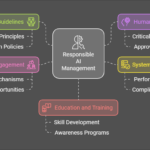Revolutionizing Productivity: AI-Powered Tools for Efficient Time and Task Management
In today’s fast-paced business environment, effective time and task management has become more crucial than ever. Artificial Intelligence is revolutionizing how professionals organize their work, promising unprecedented levels of efficiency and productivity. This comprehensive guide explores the latest AI-powered tools and strategies for maximizing your time management capabilities.
Understanding AI-Powered Time Management
The landscape of time management has evolved dramatically with the integration of AI technologies. These intelligent systems now offer capabilities that far exceed traditional planning tools, providing dynamic and adaptive solutions for modern professionals.
The Evolution of Task Management
Traditional task management relied on:
- Static to-do lists
- Manual priority setting
- Fixed scheduling
- Basic reminder systems
AI has transformed these fundamentals into dynamic, intelligent systems that adapt to your working style and needs.
Key Features of AI Time Management Tools
1. Intelligent Task Prioritization
Modern AI systems excel at:
- Analyzing task importance
- Assessing urgency levels
- Considering dependencies
- Adapting to changing priorities
2. Smart Scheduling
AI-powered scheduling provides:
- Optimal meeting time suggestions
- Calendar optimization
- Buffer time management
- Energy level consideration
3. Automated Time Tracking
Advanced time tracking features include:
- Activity categorization
- Productivity pattern analysis
- Focus time optimization
- Automated reporting
Implementation Strategies
Assessment and Selection
Before implementing AI tools:
- Evaluate current time management practices
- Identify specific pain points
- Define success metrics
- Research available solutions
Integration Process
Ensure smooth adoption through:
- Phased implementation
- Team training
- Process alignment
- Regular feedback collection
Best Practices for AI Time Management
1. Data-Driven Decision Making
Optimize your approach by:
- Tracking key metrics
- Analyzing productivity patterns
- Adjusting based on insights
- Regular performance review
2. Customization and Personalization
Maximize effectiveness through:
- Personal preference settings
- Work style adaptation
- Custom automation rules
- Individual productivity patterns
3. Regular System Updates
Maintain optimal performance by:
- Keeping software updated
- Reviewing automation rules
- Adjusting priorities
- Refining processes
Future Trends in AI Time Management
Advanced Integration
Expect developments in:
- Cross-platform synchronization
- IoT device integration
- Virtual assistant capabilities
- Enhanced mobile features
Cognitive Computing
Future capabilities will include:
- Advanced pattern recognition
- Emotional intelligence
- Contextual awareness
- Predictive analytics
Measuring Success and ROI
Key Performance Indicators
Track improvement through:
- Time saved per task
- Project completion rates
- Deadline adherence
- Productivity levels
- Stress reduction
ROI Calculation Framework
Consider multiple factors:
- Time efficiency gains
- Cost savings
- Quality improvements
- Team satisfaction
- Work-life balance
Overcoming Implementation Challenges
Technical Considerations
Address common issues through:
- Regular training sessions
- Technical support access
- Update management
- Data backup systems
Change Management
Ensure successful adoption by:
- Building team acceptance
- Providing adequate support
- Maintaining clear communication
- Celebrating early wins
Conclusion
AI-powered time and task management tools represent a significant leap forward in productivity technology. By implementing these solutions thoughtfully and maintaining focus on continuous improvement, professionals can achieve unprecedented levels of efficiency and work-life balance.
Call to Action
Ready to transform your time management approach with AI? Start by assessing your current processes and exploring available AI solutions. Connect with experts and join professional communities to stay informed about the latest developments in this rapidly evolving field.





Leave a Reply